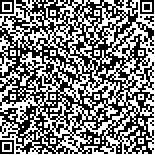孙殿荣,崔广梅,张雷红,等.基因检测在具有不随意运动型脑瘫表型相关疾病早期诊断中的临床应用[J].中华物理医学与康复杂志,2025,47(7):624-630
扫码阅读全文

|
| 基因检测在具有不随意运动型脑瘫表型相关疾病早期诊断中的临床应用 |
|
| |
| DOI:10.3760/cma.j.cn421666-20240910-00734 |
| 中文关键词: 不随意运动型脑瘫 病因 全外显子检测 分子诊断 类脑瘫疾病 |
| 英文关键词: Dyskinetic cerebral palsy Etiology Exome sequencing Molecular diagnosis Atypical cerebral palsy |
| 基金项目:青岛市出生缺陷与罕见病临床医学研究中心项目(22-3-7-1czx-1-nsh);青岛市医药卫生科研计划(2021-WJZD130);青岛市医疗卫生重点学科建设项目 |
|
| 摘要点击次数: 1653 |
| 全文下载次数: 4402 |
| 中文摘要: |
| 目的 采用全外显子、线粒体等基因检测方法确定病因不明的不随意运动型脑瘫(DCP)类型患者的遗传学病因,并分析早期识别类DCP的线索。 方法 回顾性分析21例病因不明,且具有DCP表型患儿的临床资料,包括详尽病史采集、化验检测、影像学、神经电生理、血尿代谢串联质谱检测结果。对患儿及其父母、同胞采集外周血,提取其基因组DNA后进行全外显子和(或)线粒体基因测序,获取变异位点和注释,并采用Sanger法对其候选变异进行验证。 结果 21例患儿均无明确的围生期获得性病因,1例患儿家族史阳性。实验室化验结果显示,乳酸水平增高3例,甲状腺功能异常2例。首诊时,颅脑磁共振成像结果显示,基底节区病变2例,髓鞘化延迟或伴皮质发育不良、脑沟稍深6例,脑外间隙宽伴胼胝体细薄2例,正常11例。长期随访发现,有2例患儿出现进展性病变。基因检测结果发现,临床相关的候选变异20个,结合疾病表型和遗传方式,TH、SLC16A2、RHOBTB2、FOXG1、IFIH1、WDR45、MT-ATP6、KIAA2022、GNB1、GNAO1、SLC2A1、NACC1基因的15个变异为致病性,最终明确了15例患儿的病因(71.43%);ATP1A2、SPR、ATP1A3、MED13L、NR4A2基因的杂合变异,为非致病性变异。 结论 围产期高危因素缺失、阳性家族史、颅脑磁共振成像正常或进展性病变等可作为识别类DCP表型疾病具有遗传学病因的早期线索。TH、SLC16A2、RHOBTB2、FOXG1、IFIH1、WDR45、MT-ATP6、KIAA2022、GNB1、GNAO1、SLC2A1、NACC1的致病性变异可归属于类DCP相关疾病的遗传基因谱范畴,基因检测结果判读时应给予关注。 |
| 英文摘要: |
| Objective To determine the genetic causes of dystonic cerebral palsy (DCP) of unknown etiology by using whole exome and mitochondrial gene detection methods, and to analyze clues for early identification of DCP. Methods This was a retrospective analysis of clinical data describing 21 children with unknown etiology and DCP-like phenotypes. It involved collecting a detailed medical history, biochemical testing, neuroimaging, electroencephalography and hematuria metabolic screening. Peripheral blood was collected from the children, their parents and their siblings. Genomic DNA was extracted, and whole exome and/or mitochondrial gene sequencing was performed to obtain variant sites and annotations. The candidate variants were verified by Sanger sequencing. Results No clear perinatal risk factors were found in the 21 cases, though there was 1 case of family history. Laboratory tests found increased lactic acid in 3 and abnormal thyroid function in 2 cases. The neuroimaging showed lesions in the basal ganglia in 2 cases, delayed myelination in 6 cases, sometimes with cortical dysplasia, a wide extracerebral space and/or a thin corpus callosum. The images of 11 of the children were normal. Later follow-up showed changes in the brain magnetic resonance images (MRIs) of 2 of the children. Pathogenic or likely pathogenic candidate variants were identified in 15 of the 21 children (71%) within 12 genes: TH, SLC16A2, RHOBTB2, FOXG1, IFIH1, WDR45, MT-ATP6, KIAA2022, GNB1, GNAO1, SLC2A1 or NACC1. Fifteen of the children received a precise diagnosis. Genetic testing found heterozygous variants of ATP1A2, SPR, ATP1A3, MED13L or NR4A2 genes in the remaining six children, all of which were non-pathogenic variants. Conclusions The absence of perinatal high-risk factors, a positive family history, and a normal or progressive brain MRI can be used as early clues to identify atypical DCP cases. TH, SLC16A2, RHOBTB2, FOXG1, IFIH1, WDR45, MTATP6, KIAA2022, GNB1, GNAO1, SLC2A1 and NACC1 variants belong to the spectrum of DCP-related pathogenic genes, and attention should be paid to the interpretation of genomic analysis results. |
|
查看全文
查看/发表评论 下载PDF阅读器 |
| 关闭 |
|
|
|